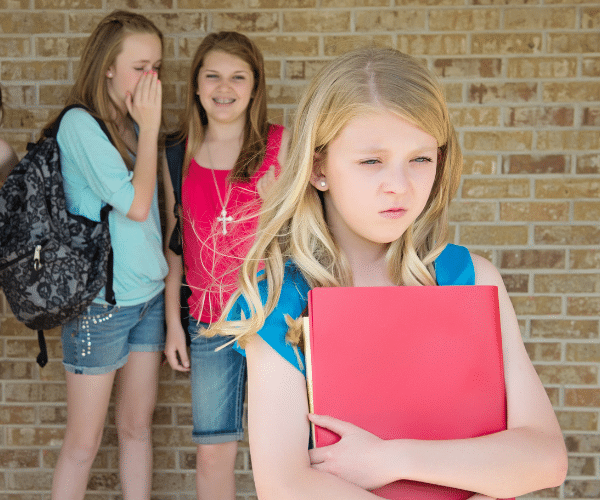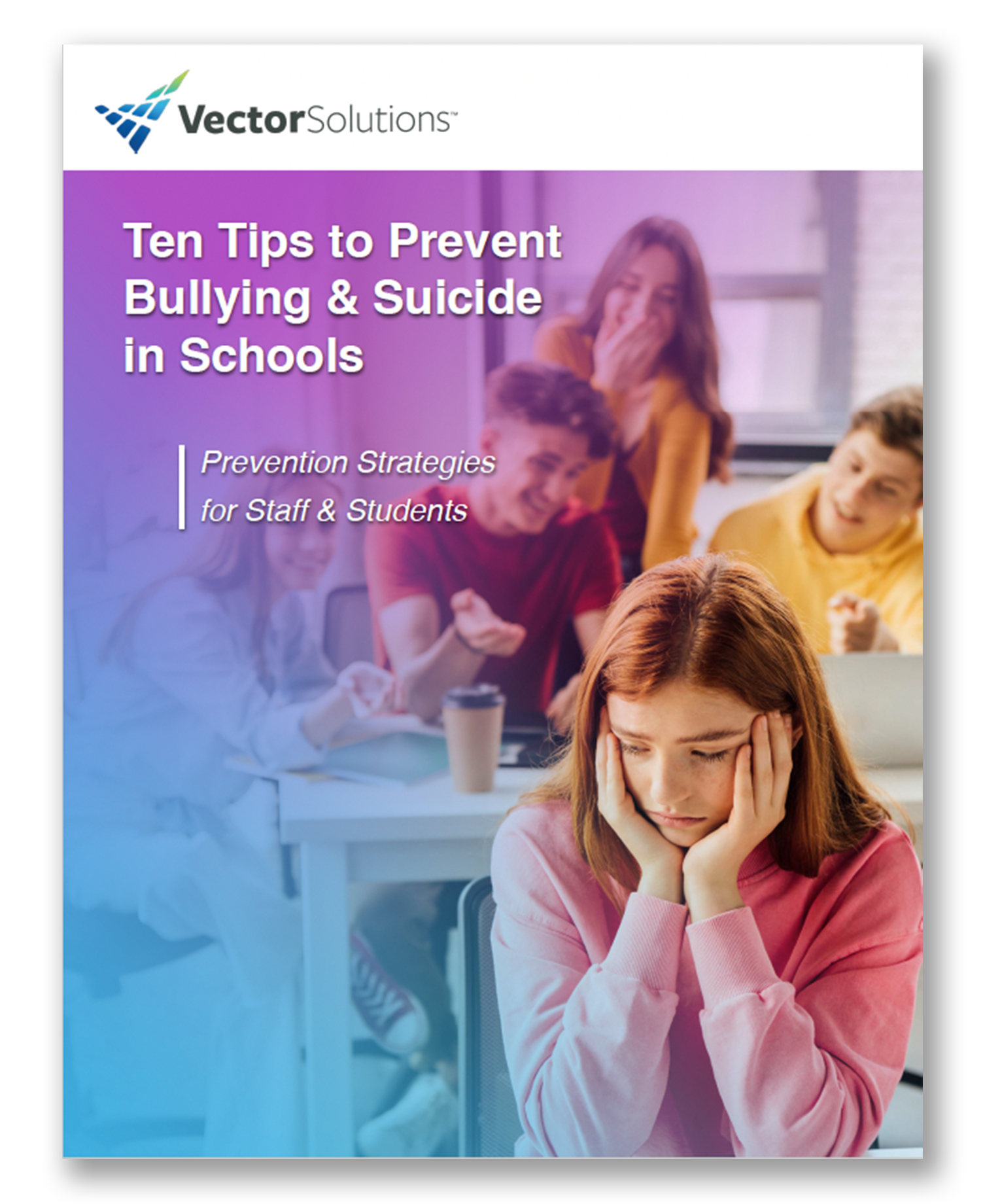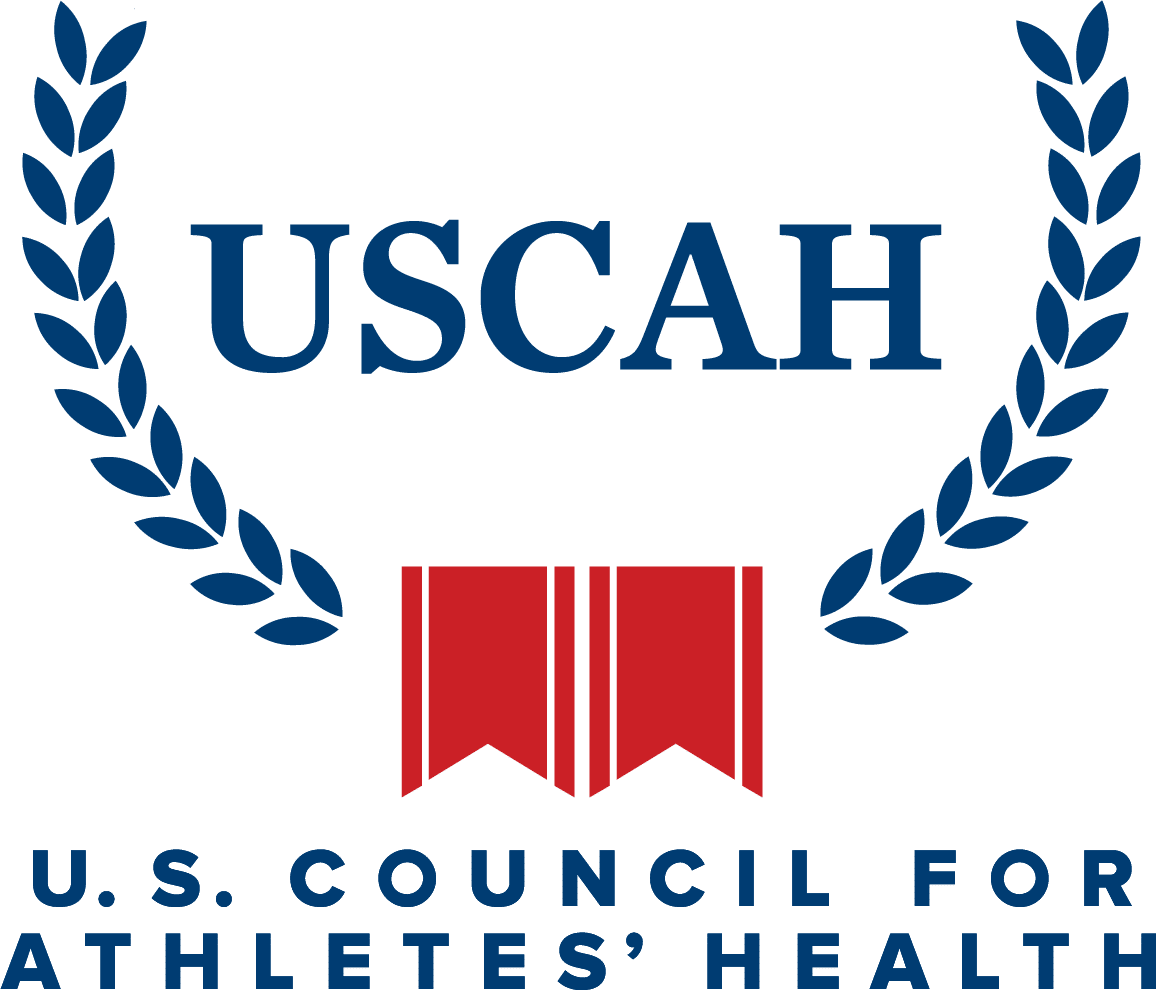September 27, 2023 min read

Bullying Prevention Month Insight and Resources
Industry:
Solution:

October is National Bullying Prevention Month, a time dedicated to raising awareness about bullying and bullying prevention efforts nationwide. In K-12 schools, bullying continues to be a significant concern. Consider these statistics:
Bullying Facts
1. Bullying happens to a significant number of students.
According to a 2021 CDC survey of high school students, in the past 12 months:
- 15% reported being bullied on school property
- 15.9% reported being cyberbullied
- 22.0% reported “any” bullying
A 2023 Boys & Girls Club survey which included children as young as age 9, found 40% of youth had been bullied on school property and 18% had been cyberbullied. (Boys & Girls Club of America, 2023)
2. Bullying often isn’t disclosed.
Less than half of students (45%) who were cyberbullied told an adult. Of those who were bullied on school property, 62% told an adult. (Boys & Girls Club of America, 2023)
3. Some youth experience bullying more than others.
According to the CDC’s 2021 survey:
- All forms of bullying victimization are more common among females, white youths, and sexual minority youths
- White youths, American Indian and Alaska Native and multiracial youths had higher bullying rates than other racial and ethnic groups
4. Bullying is a frequent discipline problem.
Nearly 14% of public schools report that bullying is a discipline problem occurring daily or at least once a week (CDC Fast Facts)
5. Middle school students are most at risk.
- Reports of bullying are highest in middle schools (28%) followed by high schools (16%), combined schools (12%), and primary schools (9%)
- Reports of cyberbullying are also highest in middle schools (33%) followed by high schools (30%), combined schools (20%), and primary schools (5%)
Overall, rates of bullying victimization decreased from 2011 to 2021; according to the CDC’s 2021 survey. However, it notes the decrease in bullying on school property from 19.5% pre-pandemic (2019) to 15.0% during the COVID-19 pandemic (2021) was likely due to so many schools being closed during 2020-2021. Cyberbullying rates remained stable, which is not a surprising finding, it notes, because virtual learning and overall online interactions increased during the pandemic.
Types of Bullying and Their Impact
Bullying can take many forms, including:
- Being the subject of rumors or lies
- Being made fun of, called names, or insulted
- Pushed, shoved, tripped, or spit on
- Leaving out/exclusion
- Threatened with harm
- Others tried to make them do things they did not want to do
- Property was destroyed on purpose
Bullying can have a significant, long-term negative impact, including physical injuries or even death as well as depression, anxiety, sleep difficulties, and lower academic achievement. Students who bully others are at increased risk for substance misuse, academic problems, and experiencing violence later in adolescence and adulthood.
However, not all types of bullying have the same impact. Researchers at Drake University in Iowa found that certain types of bullying have a far greater impact on a student’s mental well-being than others.
Identity bullying, which includes bullying based on sexual orientation or gender identity, as well as sexual jokes, was correlated to significant feelings of distress or suicide attempts, according to an article about the study.
Cyberbullying and social bullying — leaving someone out or turning peers against them — followed identity bullying on degree of impact.
Conversely, physical bullying such as hitting or shoving had a very low association with risk for mental distress according to the study.
Bullying Prevention
To help address bullying in schools, all 50 states have adopted anti-bullying legislation that requires schools to develop and implement a policy prohibiting bullying. In almost all states, schools are also required to implement age-appropriate bullying prevention programs and to provide training for all school staff, including teachers, aides, support staff, and school bus drivers, on preventing, identifying, and responding to bullying.
The CDC recommends tailoring prevention strategies to create safe, nonjudgmental environments that promote protective factors to reduce disparities and increase safety among youths and that address disparities in risk for adolescent victimization by sex, race and ethnicity, and sexual minority status.
10 Tips to Prevent Bullying and Cyberbullying in Schools
This guide, written by nationally recognized school safety expert Scott Poland, dives into practical prevention strategies to reduce bullying and suicide in schools.
Download Guide
How Vector Solutions Can Help
Vector Solutions provides expert-authored online courses for staff and students to help support bullying prevention efforts and create safer schools.
Student and Staff Training
For students, Vector’s Student Safety and Wellness Courses cover important safety, wellness, and social and emotional learning topics, including:
- Bullying Prevention including how to recognize and respond to bullying and cyberbullying
- Digital Citizenship including how to interact safely and respectfully online, how to recognize harmful behavior and how to protect yourself online
- Healthy relationships including how to recognize and practice empathy and understand how your behavior affects others
- Skill for an inclusive school, which helps students understand diversity and create welcoming school communities
For K-12 educators and staff, Vector’s online training courses help employees understand and respond to issues of bullying, as well as help them to create welcoming school environments. Courses include:
- Bullying Recognition and Response
- Responding to Bullying
- Cyberbullying
- Bullying and Students with Special Needs
- Bullying Prevention on the School Bus
- Hazing Prevention in K12 Environments
- Making Schools Safe and Inclusive for LGBTQ+ Students
- Making Schools Safe and Inclusive for Transgender Students
- Workplace Bullying: Awareness and Prevention
Vector LiveSafe
Vector LiveSafe is a mobile platform and app that helps schools report, track, and receive tips about emergencies, safety concerns and other issues impacting students’ health and wellness. It’s a valuable tool that allows students to report incidents such as bullying and cyberbullying, threats of violence, student mental health crises, suicide ideation, and more. Features include:
- Anonymous reporting of incidents
- A silent panic alarm for emergencies
- Mass notification and broadcast messages
For more information about Vector’s solutions for K-12 schools, request a demo.










